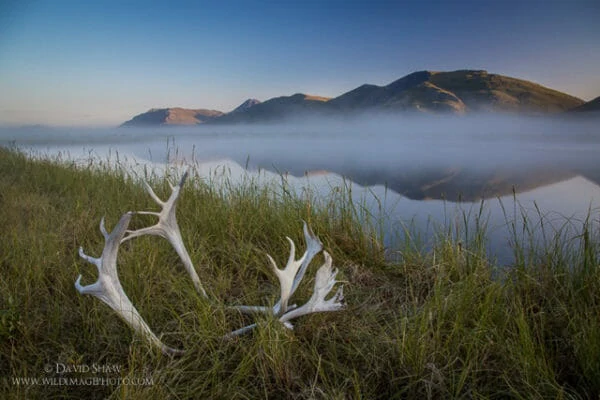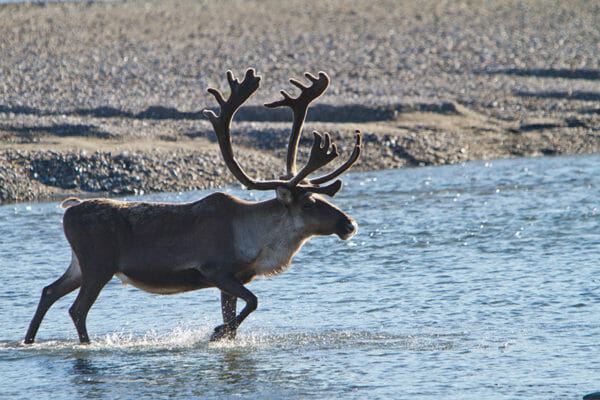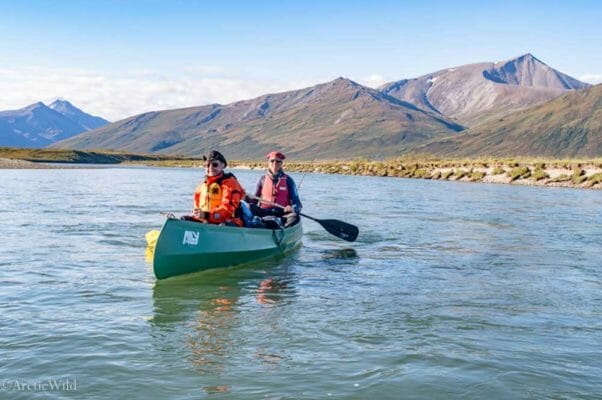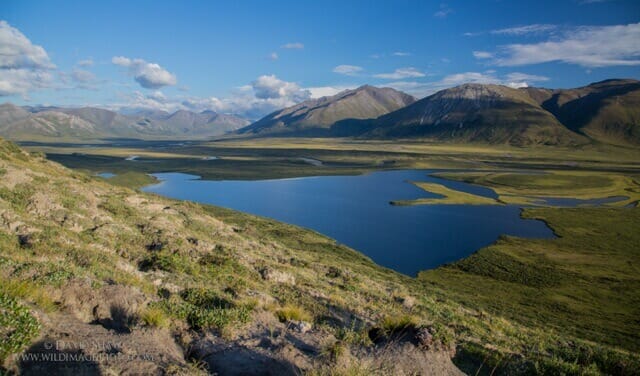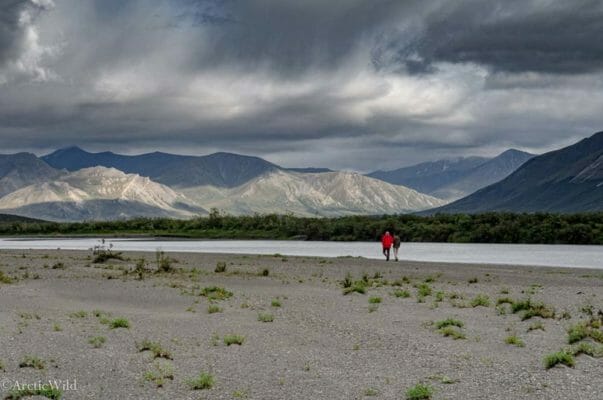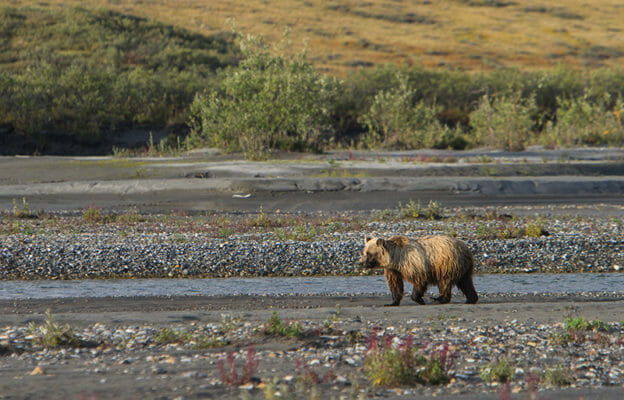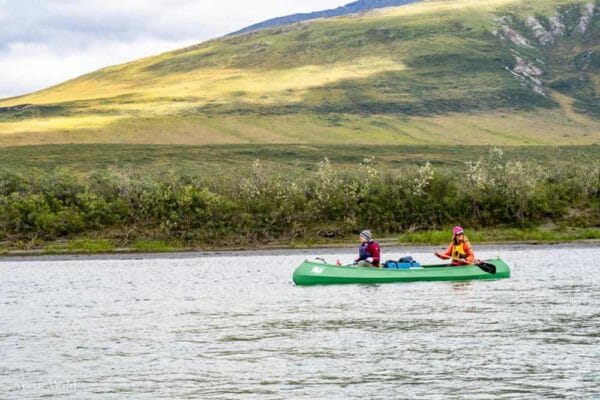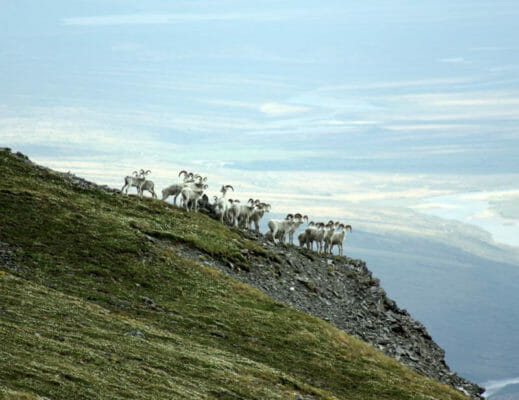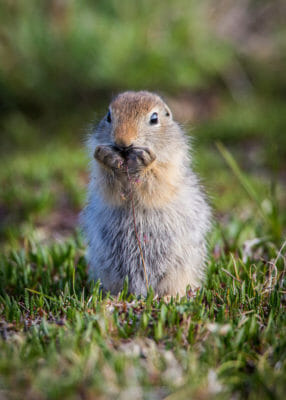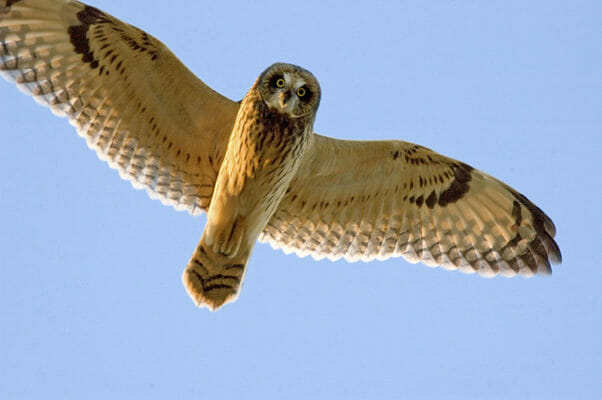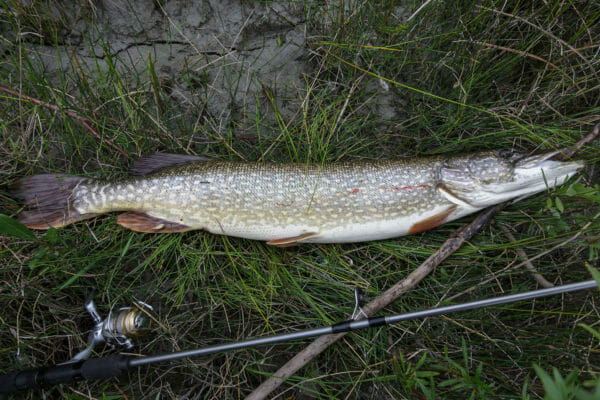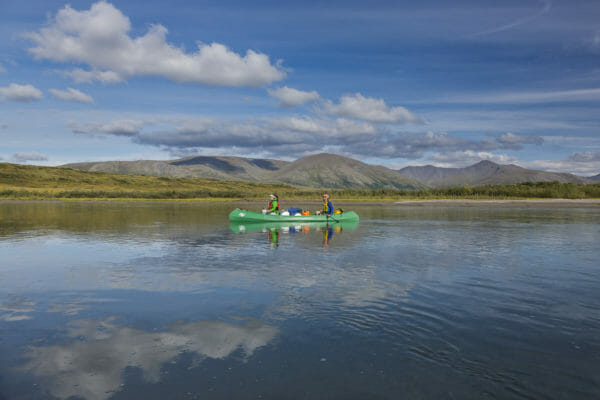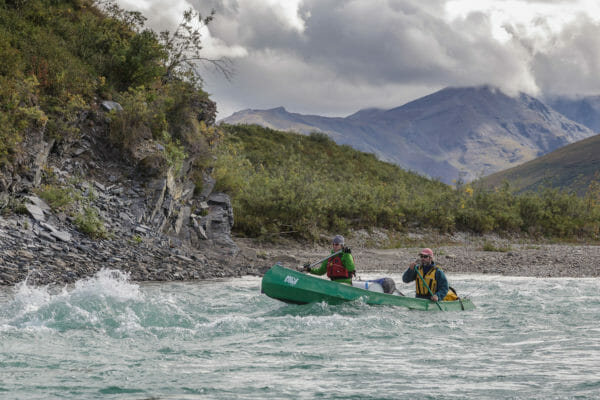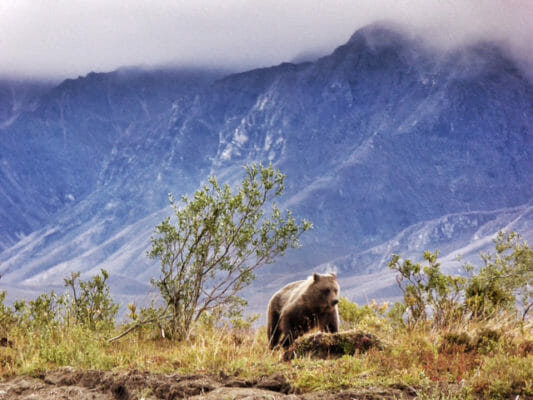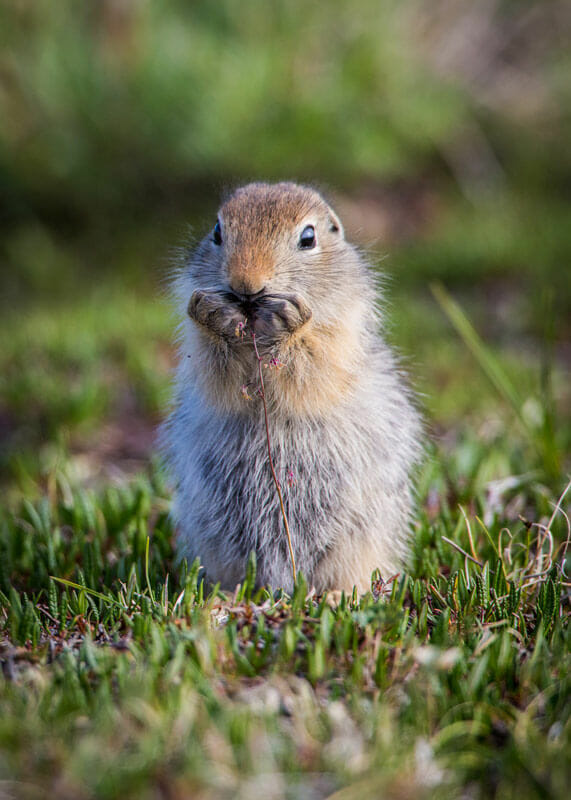Last updated: September 27, 2022
Itinerary
What follows is a general flow of events. Expect the unexpected and prepare to be flexible.
June 4
Meet your guide for a pre-trip meeting in Fairbanks at 4 pm.
June 5
It’s a long day. We fly north from Fairbanks, to the south side of the Brooks Range and then shuttle from there in a smaller plane. Once we are all on the ground and alone in the wilderness we can take the first of many walks. The tallest peak in Gates of the Arctic looms above camp and we will linger here in the high-country before paddling.
June 6 - 9
The upper Noatak is spectacularly scenic. Upriver from our camp the valley is narrow and rocky. Dall sheep dot the cliffs and snow fills the gullies. Looking west the floodplain widens and lakes are filling with migratory birds from the world over.
We will enjoy a full day to hike in the upper reaches, above where most travelers start the trip. The ambitious members of our group can climb onto the flanks of Mt Igikpak for views that will never be forgotten. Others can wander by the river seeking the first spring flowers and with luck we’ll find musk oxen or wolves or any number of other wild creatures.
On our first paddling day we’ll spend some time discussing boating safety and reviewing paddle strokes and how to “read” the river. Once we start down river your guides will continue to provide instruction and insight until you feel confident in your canoeing skills. There are some shallow spots on the first day and some tight corners to negotiate too. One year we had to pull over quickly because a moose was standing in the only deep water in the river!
June 10 - 12
We’ll canoe our way down the Noatak. On travel days we will spend about five hours on the river and cover about 15 miles. For most of the journey the Noatak is in a single channel with few obstacles. This makes it a good river to learn the finer points of river canoeing. If the snow is still melting the river might be high and fast, but most years we enjoy clear water and fairly relaxed canoeing on the upper Noatak.
Some years on our June Noatak trip the river is genuinely warm and we splash and swim in the river enjoying surprising warmth above the Arctic Circle
Each evening, we’ll find a new campsite on a broad gravel bar or a high and dry tundra bank with a view of the river and mountains. There are no designated campsites and the river, weather, wildlife, and group will determine where we camp. There will be free time each and every day after camp is pitched. The long evening is yours to enjoy the midnight sun. It won’t ever get dark!
There is great hiking from each and every campsite and every other day will likely be a layover day when we will explore on foot from camp. There is lots of good walking on dry rocky ridges, along the river, or up pretty tundra creeks. Day hikes vary in length from a couple hour stroll to ascents of minor peaks. Your guide(s) will offer suggestions and tailor the days adventure to suit your desires. If you prefer to explore on your own, that’s OK too.
June 13
Near the end of the trip there are some fast corners, small waves, and rocky ledges to negotiate. After a week of paddling we hope you’ll have the skills and confidence to paddle this section with style! We’ll make time to hike to nearby lakes to fish and admire the glassy waters. As we near the western boundary of Gates of the Arctic National Park the mountains recede and the sky grows broad. This is a favorite area to see grizzly bears digging for roots on the river flats and a great place to see waterfowl preparing nests. Spring turns to summer and the arctic is buzzing with life.
June 14
Clean up and pack our gear. If the weather is good, we hear the hum of the propeller mid-day and seal our bags one last time. This is perhaps the first plane we’ve heard since landing on the Noatak a week prior.
Then it is a spectacular flight back through the mountains and on to Fairbanks, arriving in time for a late dinner.






